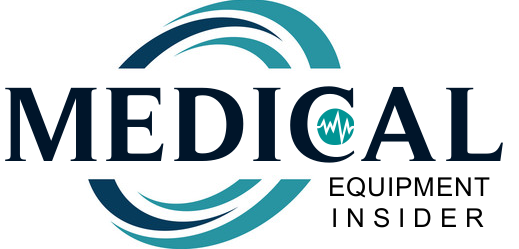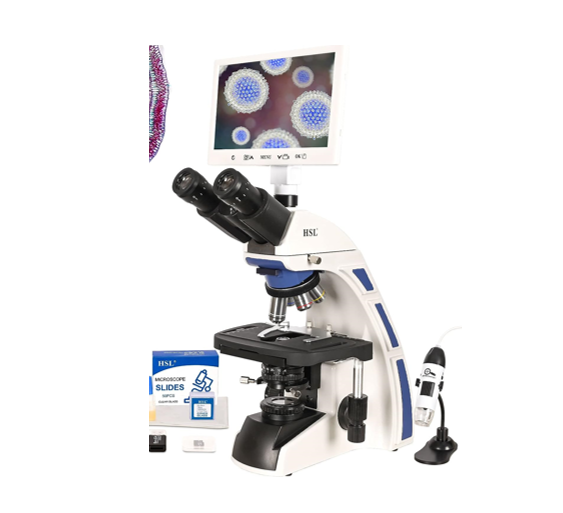Availability of most affordable electron microscopes have revolutionized scientific research by making high-resolution imaging and analysis accessible to a broader range of researchers and institutions.
Electron microscopes are invaluable tools in various scientific fields, including biology, materials science, nanotechnology, and more, allowing researchers to visualize and analyze objects and structures that are too small to be seen with conventional microscopes.
In this article, we will examine the remarkable advancements in affordable electron microscopy technology, highlighting their transformative impact on diverse scientific fields and their potential to unlock new discoveries at the smallest scales.
What Is An Electron Microscope?
An electron microscope is a powerful type of microscope that uses a beam of electrons instead of visible light to magnify and study extremely small objects and structures at the nanoscale.
Unlike optical microscopes, which use visible light and glass lenses to magnify images, electron microscopes utilize electron beams that can achieve much higher levels of magnification and resolution due to the much shorter wavelength of electrons compared to visible light.
There are two main types of electron microscopes:
- Transmission electron microscopes (TEM), which pass electrons through a thin specimen.
- Scanning electron microscopes (SEM), which scan a focused electron beam over a specimen’s surface to create high-resolution images.
What To Consider When Buying Most Affordable Electron Microscopes
Here are some important considerations:
Type of Electron Microscope
Determine whether you need a Transmission Electron Microscope or a Scanning Electron Microscope. TEMs are used for imaging thin sections of specimens in high resolution, while SEMs are ideal for surface imaging and 3D reconstructions.
Resolution
Assess the microscope’s resolution capabilities, as this determines the level of detail you can observe. Higher resolution is essential for certain applications, so choose a microscope that meets your specific requirements.
Magnification Range
Consider the magnification range of the microscope. Different research needs may require different levels of magnification, so choose a microscope that covers the range you require.
Sample Size and Type
Ensure that the microscope can accommodate your sample size and type. Some microscopes are better suited for biological samples, while others are designed for materials science applications.
Ease of Use
Evaluate the user-friendliness of the microscope, especially if you are not an experienced electron microscope user. User-friendly interfaces and software can make a significant difference in your workflow.
Maintenance and Operating Costs
Consider the maintenance requirements and operating costs associated with the microscope. This includes the cost of consumables, such as electron sources and detectors, as well as routine maintenance and service contracts.
Budget
Set a clear budget and stick to it. Affordable electron microscopes are available at various price points, so make sure you choose one that fits within your budget while meeting your research needs.
Warranty and Support
Inquire about the warranty and support options provided by the manufacturer or distributor. A good warranty and access to technical support can be crucial for minimizing downtime and addressing issues promptly.
Upgradability
Check if the microscope is upgradable to accommodate future research needs. This can extend the lifespan and usefulness of your investment.
User Reviews and References
Research the reputation of the manufacturer and model by reading user reviews and seeking references from other researchers who have used the same microscope.
Facility Requirements
Ensure that your laboratory or facility has the necessary infrastructure, such as adequate power supply, ventilation, and space, to accommodate the electron microscope.
Safety and Training
Consider safety requirements and the availability of training resources for operating the electron microscope safely and effectively.
Additional Features
Assess any additional features or accessories that may enhance your research, such as energy-dispersive X-ray spectroscopy (EDS) for elemental analysis or in-situ experimentation capabilities.
By carefully evaluating these factors, you can make an informed decision when purchasing an affordable electron microscope that aligns with your research goals and budget constraints.
Additionally, consulting with experts in the field and seeking recommendations can be valuable in the decision-making process.
The following are a few choices for you to consider:
Most Affordable Electron Microscopes
-
Woehrsh Compound Trinocular Microscope

Woehrsh compound trinocular microscope is perfect for viewing minute details on slides. Its ultra-precise focusing system allows adjustments from coarse to fine, making it ideal for clinical professionals, students and professional hobbyists.
Features
- 30 degrees real angle view
- Maximum magnification of 5000 x
- Made from metal
- 25 Abbe focusing lens
- Four DIN achromatic objectives
- H10x and WF50x eyepieces
- Has eight magnifications i.e. from 40x to 5000x
- Trinocular microscope
- Electronic eyepiece
- 5 MP camera with zoom lens
- 0 USB output
Pros
- Has coaxial design and fine focus
- It is versatile and stylish
- Has multi-purpose use
- Focuses more accurately
- Provide better observation effect.
- Eyepieces mounted on the rotary turntable
- Multiple magnifications to chose
- Able to view, live stream, record and capture magnified specimens images.
Cons
- Light may flicker at high output settings
-
Vabiooth Lab Compound Trinocular Microscope
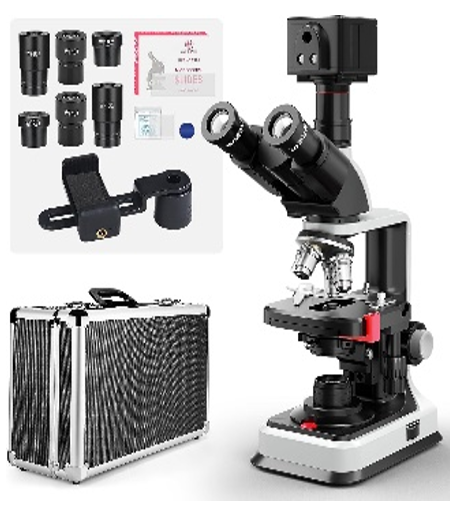
Vabiooth lab compound trinocular microscope boasts design elements that make it powerful enough for laboratory use, while remaining user-friendly as a teaching tool.
Features
- 55-75mm interpupillary distance
- Mechanical stage with 110x120mm rack stop
- Three spring objective lenses i.e. 4X, 10X and 40X
- NA 1.25 Abbe condenser with iris diaphragm
- One spring and oil objective lens i.e. 100X
- Adjustable ocular diopter of +/- 5dp
- Eyepieces of WF10X WF16X and WF25X
- Stage x-y travel range of 70x30mm
- Type-C 5V/1A 100-240V power input by AC adaptor or 3AA
- 30 degree inclined head
- Transmitted illumination with 1W LED bulb
- 360 degree rotatable trinocular head
- Coaxial coarse and fine focus knobs
- Magnification levels from 40X to 2500X
- Comes equipped with a 5MP camera
- Weighs 15.54 pounds
Pros
- Adjustable brightness
- Reduced neck strain.
- Dual power supply
- Provides a larger field of view
- Safe and power-saving low voltage input
- Portable power supply
- Enables image editing and processing
- The camera can be easily replaced with a monitor
- Comes with an aluminum carry case
- Software is compatible with Mac OS X and Windows Vista (7,8,10)
Cons
- Not professional quality
-
Crspexil Microscope for School Laboratory And Home Education
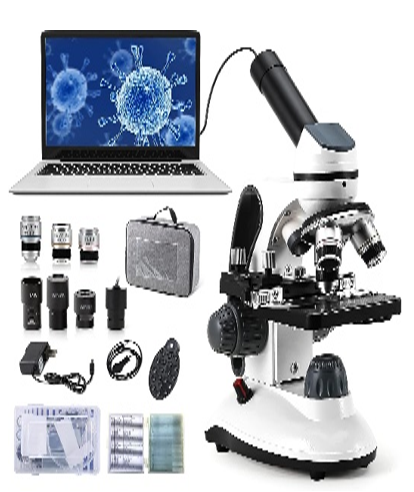
Crspexil biological microscope is designed to aid students, beginners, amateur scientist and hobbyists exploring the fantastic world of the life. It is ideal for school, laboratory or home teaching, one-on-one instruction.
Features
- Maximum magnification 2000X
- LED light
- Has a 2MP camera
- Measures 263.78 x 200.79 x 11.8 inches
- Compatible tablet and smartphone
- Microscope eyepiece of WF10X and WF25X
- 2X extender lens
- 4x ,10x and 40x achromatic objective lenses
- Offers 10 magnification settings from 40X to 2000X.
Pros
- Simple to operate
- Has coarse and fine focusing
- Multiple Magnification
- Has mechanical stage
- Excellent microscope for children and adults.
- Comes with a complete set of accessories
- Light weight
- Comes with 30p microscope Prepared Slides
-
BOGRINUO microscope With Dual LED Illumination
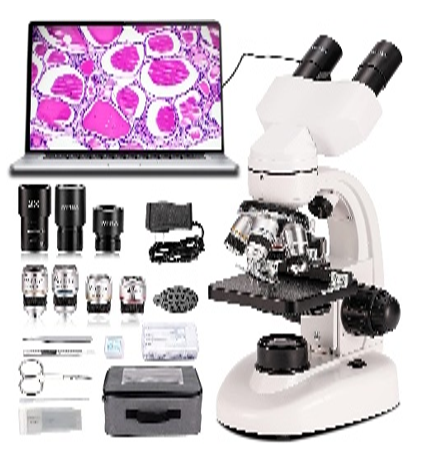
BOGRINUO research microscope kit is widely used in various student subjects and classes for learning and experimental operations. It is also suitable for amateur applications or laboratories.
Features
- Measures 39 x 18 x 29.1 centimeters
- Dual LED Illumination
- Binocular electron microscope
- Three DIN achromatic objectives (4X, 10X, 40X)
- Two optical glass eyepieces (WF10X, WF25X)
- 45 Degrees angle view
- Maximum magnification of 450 x
- Two-layer mechanical stage
Pros
- Shows clear images
- Easy to focus
- Portable
- Wide range of use
- comes with multiples accessories
- Has multiple magnifications
- Comes with prepared microscope slides
Cons
- Less than 500X magnification
-
Crspexil Compound Trinocular Microscope
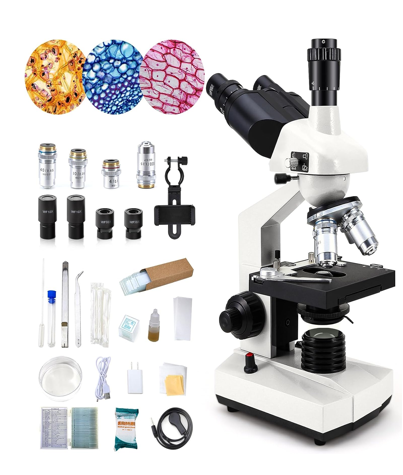
Crspexil trinocular compound microscope is specifically designed for professionals such as doctors, scientists, and researchers as well as enthusiastic hobbyists who wish to explore the intricate wonders of life.
Features
- Corded electric power source
- 45 Degrees view angle
- Maximum magnification 2000 x
- 195 achromatic objective lens
- Magnifications from 40X to 5000X
- Rotates 360 degrees
- All-optical glass lens
- 25 NA Abbe spotting lens
- Diopter compensation function
- Adjustable interpupillary distance,
- Interchangeable wide-field eyepieces
Pros
- Variable iris, rack and pinion focus control
- Numerous applications in various domains
- User friendly.
- Comes with an array of supplies and accessories
- Offers greater observation comfort
- Excellent imaging effect and workmanship.
- Offers precise focusing, clear inspection and adjustable brightness.
Cons
- Eye piece camera is not mounted
-
Swift Trinocular Compound Microscope – SW350T
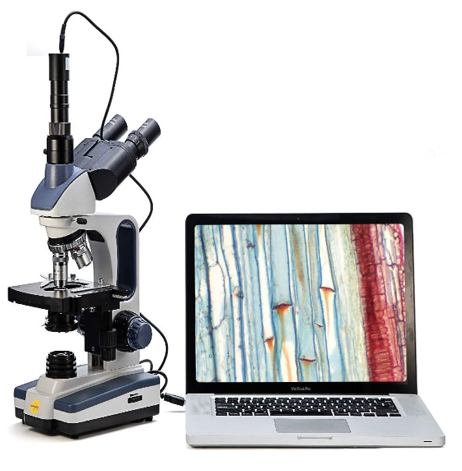
Swift Trinocular Compound Microscope offers basic microscopy views and it is ideal for beginners.
Features
- Three spring achromatic DIN objectives i.e. 4X, 10X, 40X(Spring)
- Six powerful magnification levels between 40X and 2500X.
- Interpupillary distance of 48-75mm
- Adjustable ocular diopter of +/- 5dp
- One spring and oil achromatic DIN objective i.e. 100X
- 10X and 25X eyepieces
- Coaxial coarse and fine focus knobs
- NA 1.25 Abbe condenser and iris diaphragm.
- 30 degree head incline
- Weighs 12.17 pounds
- Stage x-y travel range of 70x30mm
- 360 degree rotatable trinocular
Pros
- Interchangeable wide view field
- Mounted eyepieces
- Allows users to stream and record of specimen images.
- 130x130mm mechanical stage with rack stop
- NA 1.25 Abbe condenser with iris diaphragm
- Adjustable brightness
- Light weight
- Comes with multiple user accessories
Cons
- Camera view not centered on the binocular view
You May Also Like
best hearing aids in the market for senior citizens
8 best medical scooters for broken foot
Safety Measures When Using An Electron Microscope
Safety measures are crucial when using an electron microscope to ensure the protection of both the operator and the instrument.
Here are important safety measures to follow:
1.Training
Only individuals with proper training and experience should operate electron microscopes. Comprehensive training should cover both the instrument’s operation and safety protocols.
2.Personal Protective Equipment (PPE)
Wear appropriate PPE, including lab coats, safety goggles, and gloves, to protect against chemical and biological hazards associated with sample preparation. Depending on the specific application, additional PPE may be necessary.
3.Electrical Safety
Ensure that the electron microscope is ground properly and connect to a dedicated electrical circuit. Avoid using extension cords or adapters.
4.Radiation Protection
Electron microscopes produce X-rays as a byproduct of the electron beam interaction with the sample. Install appropriate shielding and warning signs in the microscopy facility. Operators should minimize exposure by maintaining a safe distance from the instrument during beam operation.
5.Sample Handling
Handle samples with care, especially when using toxic or hazardous materials. Follow established protocols for sample preparation and disposal. Use safety cabinets or fume hoods when necessary.
6.High Vacuum
Be aware that electron microscopes operate under high vacuum conditions. Ensure that all vacuum seals are properly maintained to prevent leaks. Follow manufacturer guidelines for venting and evacuating the microscope chamber.
7.Electron Beam Safety
Never obstruct or redirect the electron beam improperly, as it can cause damage to the instrument and pose safety risks. Keep all body parts and objects away from the beam path.
8.Emergency Shutdown
Familiarize yourself with the emergency shutdown procedures for the electron microscope and the facility in which it is housed. Know how to vent the microscope chamber safely in case of emergencies.
9.Chemical Hazards
Electron microscopy often involves the use of chemicals for sample preparation. Store and handle chemicals according to safety guidelines, and ensure that chemical waste is disposed of properly.
10.Radioactive Samples
If working with radioactive samples follow radiation safety protocols and ensure that the electron microscope facility is equipped to handle such materials safely.
11.Maintenance and Service
Regularly maintain and service the electron microscope as recommended by the manufacturer to prevent equipment malfunctions that could pose safety risks.
12.Emergency Contacts
Maintain a list of emergency contacts, including the manufacturer’s technical support and local emergency services, in case of accidents or equipment issues.
13.Safety Interlocks
Ensure that safety interlocks and features provided by the manufacturer are functioning correctly. These interlocks are designed to prevent unsafe conditions.
14. Documentation
Keep thorough records of all microscope operations, including any safety incidents, maintenance, and equipment usage.
15. Communication
Establish clear communication protocols within the laboratory or facility for sharing safety information and updates related to electron microscopy.
Adhering to these safety measures is essential for a safe and productive electron microscopy laboratory environment.
Always prioritize safety and consult with safety officers or experts in your institution for specific safety guidelines and protocols related to electron microscope operation.
FAQs For Most Affordable Electron Microscope
1)What are the main applications of affordable electron microscopes?
Affordable electron microscopes are used in various scientific fields, including biology, materials science, nanotechnology, and geology. Researchers use them to visualize and analyze nanoscale structures, study the morphology of biological samples, investigate the properties of materials, and conduct research in numerous other areas where high-resolution imaging is essential.
2)What are the limitations of affordable electron microscopes compared to high-end models?
Affordable electron microscopes may have limitations in terms of their maximum achievable resolution, imaging speed, and advanced features. While they provide excellent value for the price, they might not match the performance of high-end electron microscopes in terms of ultra-high resolution imaging or specialized techniques.
3)Are there specific brands or models known for offering affordable electron microscopes?
Several manufacturers produce affordable electron microscope models. The availability and reputation of these models can vary over time. It is essential to research the current market offerings and consult with experts in the field to identify reliable and cost-effective options that meet your research requirements.
4)What factors should I consider when selecting an affordable electron microscope for my research?
When choosing an affordable electron microscope, consider factors such as the type of microscope (TEM or SEM), resolution, magnification range, sample compatibility, ease of use, maintenance costs, and available support and training resources. Additionally, assess your budget constraints and seek recommendations from peers or experts to make an informed decision that aligns with your research goals.
Conclusion
In conclusion, the emergence of affordable electron microscopes has ushered in a new era of accessibility and democratization in the world of scientific research.
These innovative instruments, designed with budget-conscious institutions and researchers in mind, have successfully bridged the gap between the high cost of traditional electron microscopes and the pressing need for advanced imaging and analysis at the nanoscale.
As the field continues to evolve, researchers must carefully consider their specific requirements and budget constraints when selecting the most suitable affordable electron microscope.
With ongoing advancements in technology and increased competition among manufacturers, the future holds promise for even more accessible and capable electron microscopes, further accelerating scientific progress and unlocking the mysteries of the nanoscale world for generations to come.
